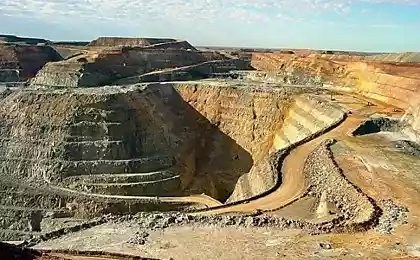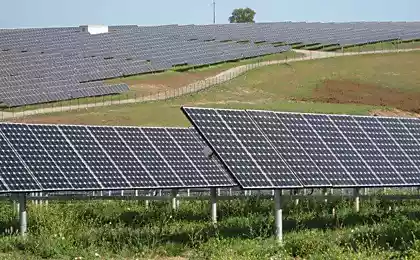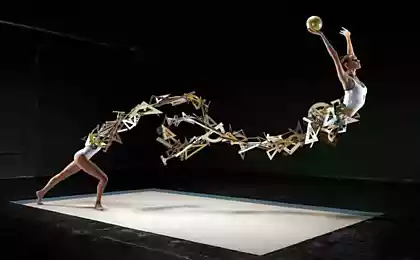591
Zagorsk PSP
Zagorsk Pumped Storage Power Station - the largest PSP in Russia. It is located on the river Cunha in the Moscow region, near the village of Bogorodskoye. Power PSP - 1200/1320 MW (in the turbine / pump mode).
Zagorsk PSP - the only one in Russia pumping stations, able not only to produce but also to "store" electricity. At night, when electricity demand falls, hydroelectric pumped storage water is pumped from the lower station to the upper basin. During the day the water through hydroelectric triggered back, providing additional power generation during periods of high consumption. Thus, Zagorsk PSP performs an extremely important function, smoothing peak loads in the Moscow energy system. Worth noting that the station buys electricity at night.
19 photos via russos
The decision to build the country's first hydroelectric power station in Sergiev Posad district was adopted in 1974. The first two reversible pumped storage hydroelectric Zagorskaya were put into operation in December 1987 at full capacity the station came in 2000, as an act of acceptance of Zagorsk PSP into operation was signed at the end of 2003.
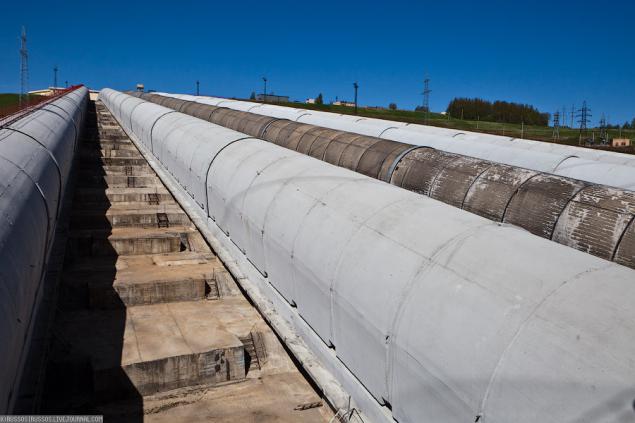
02. The length of the water mains - 800 meters, diameter - 7, 5 meters, and the thickness of the concrete shell - 0, 4 meters. Inside conduits is solid metal waterproofing.

03. The building has 6 reversible pumped storage hydropower units axial-radial type with a capacity of 200/220 MW, working at a head of your payable 100 m.

04. The number of starts of reversible pumped storage hydropower units reaches 440 a month, and sometimes about 30 start-ups per day.
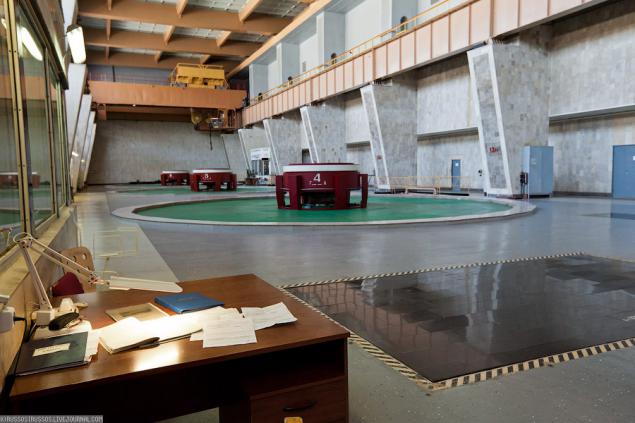
05. The first hydroelectric generator is currently under reconstruction.

06. As of the year 2005 in the world there are about 460 HAPs total capacity of about 200 GW. The total capacity of the PSP in the United States - more than 20 GW in Germany, France and Italy - more than 5 GW in the UK - more than 3 GW.

07. Construction of Zagorsk PSP-2, located a hundred meters south of the first station.

08. In October last year, has begun installation of penstocks.

09. The design capacity of the plant - 840 MW (4 reversible hydraulic unit of 210 MW).

10. In contrast to the first station, where the water line going from the finished rings, here at the site are prepared only reinforcement.

11. The weight of each stope - about 70 tons. Ring going to the landfill, and then lowered on ropes down into place.

12. The first two hydroelectric capacity of 420 MW is planned to be commissioned in December 2012. At full capacity - 840 MW - the station will be released in 2014.

13. According to preliminary estimates of experts installation of water main will take about 12 months.

14.

15. The view from the upper pool on the PSP-1.
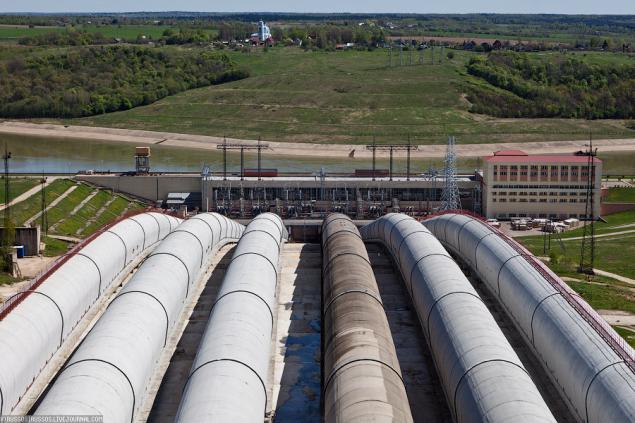
16. When mounting the conduit first accident occurred. When you place two w / w of the Rings (the total weight of about 250 tons, if I remember correctly) I had a dinner. Believing that the Spark is well secured to the cables, the workers went there. At some point, the load slipped and fell on an already-assembled rings. The strength of the shock was such that the deformed all installed ring. We had to dismantle the ring 21 and stored on this site. It was too hard to hollow and meaningless this first class gidrobeton.

17. Headwater PSPP-2.

18. The upper reservoir formed by a dam. And for the new station is next to the new dumping. A lower reservoir they have in common.
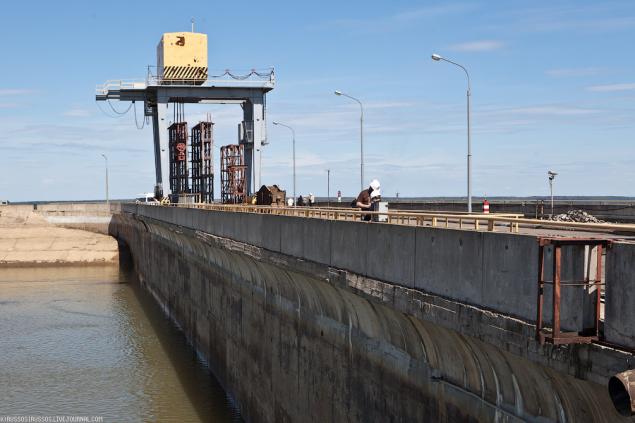
19.

Source:
Zagorsk PSP - the only one in Russia pumping stations, able not only to produce but also to "store" electricity. At night, when electricity demand falls, hydroelectric pumped storage water is pumped from the lower station to the upper basin. During the day the water through hydroelectric triggered back, providing additional power generation during periods of high consumption. Thus, Zagorsk PSP performs an extremely important function, smoothing peak loads in the Moscow energy system. Worth noting that the station buys electricity at night.
19 photos via russos
The decision to build the country's first hydroelectric power station in Sergiev Posad district was adopted in 1974. The first two reversible pumped storage hydroelectric Zagorskaya were put into operation in December 1987 at full capacity the station came in 2000, as an act of acceptance of Zagorsk PSP into operation was signed at the end of 2003.

02. The length of the water mains - 800 meters, diameter - 7, 5 meters, and the thickness of the concrete shell - 0, 4 meters. Inside conduits is solid metal waterproofing.

03. The building has 6 reversible pumped storage hydropower units axial-radial type with a capacity of 200/220 MW, working at a head of your payable 100 m.

04. The number of starts of reversible pumped storage hydropower units reaches 440 a month, and sometimes about 30 start-ups per day.

05. The first hydroelectric generator is currently under reconstruction.

06. As of the year 2005 in the world there are about 460 HAPs total capacity of about 200 GW. The total capacity of the PSP in the United States - more than 20 GW in Germany, France and Italy - more than 5 GW in the UK - more than 3 GW.

07. Construction of Zagorsk PSP-2, located a hundred meters south of the first station.

08. In October last year, has begun installation of penstocks.

09. The design capacity of the plant - 840 MW (4 reversible hydraulic unit of 210 MW).

10. In contrast to the first station, where the water line going from the finished rings, here at the site are prepared only reinforcement.

11. The weight of each stope - about 70 tons. Ring going to the landfill, and then lowered on ropes down into place.

12. The first two hydroelectric capacity of 420 MW is planned to be commissioned in December 2012. At full capacity - 840 MW - the station will be released in 2014.

13. According to preliminary estimates of experts installation of water main will take about 12 months.

14.

15. The view from the upper pool on the PSP-1.

16. When mounting the conduit first accident occurred. When you place two w / w of the Rings (the total weight of about 250 tons, if I remember correctly) I had a dinner. Believing that the Spark is well secured to the cables, the workers went there. At some point, the load slipped and fell on an already-assembled rings. The strength of the shock was such that the deformed all installed ring. We had to dismantle the ring 21 and stored on this site. It was too hard to hollow and meaningless this first class gidrobeton.

17. Headwater PSPP-2.

18. The upper reservoir formed by a dam. And for the new station is next to the new dumping. A lower reservoir they have in common.

19.

Source:


